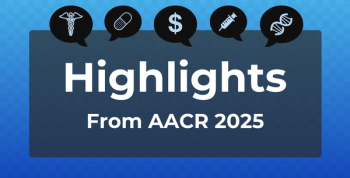
Literature Review Suggests Genetic Skeletal Disorder Therapies Are Continuously Being Developed
Despite challenges of rare disease drug development, genetic skeletal disorder (GSD) therapies continue to be developed through novel approaches such as drug repurposing and in-utero stem cell transplants, according to a recent review.
Despite challenges of
Over 140 articles and 80 trials were reviewed by researchers in a
“Rare bone diseases account for 5% of all birth defects and are an important cause of disability worldwide, yet they remain a difficult group of conditions to treat. In the 2015 Nosology and Classification of Genetic Skeletal Disorders (GSDs) there were 436 GSDs with hundreds of causative genes. Improved understanding of the fundamental pathophysiological pathways in GSDs has accelerated interest in related personalised therapies,” explained the authors.
Researchers identified over 20 personalized therapies as well as several novel disease modifying treatments in over 25 GSDs. They concluded that inherited bone dysplasias often share similar pathophysiological and molecular pathways in altering the body’s bone function. Studying these skeletal disorders assisted in the findings of potential therapeutic options for diseases, noted the authors.
The analysis of the articles and trials discussed several treatments at different stages of development. These included burosumab for X-linked hypophosphatemia, palovarotene for hereditary multiple exosteoses, carbamazepine for metaphyseal chondrodysplasia (Schmid type), lithium carbonate and anti-sclerostin therapy for osteoporosis pseudoglioma syndrome and novel therapies for osteopetrosis.
“As our understanding of the mechanisms involved within the bone mineral unit, conversion of osteoblasts to osteocytes, maturation of osteoclasts, and related mechanisms evolve, new osteoblastic, osteocytic, and osteoclastic therapeutic targets will no doubt emerge,” explained the authors. “Novel approaches like induced pluripotent stem cells, may prove to be pivotal in development of drugs in rare disease.”
The review results suggest the need for increased collaboration among different stakeholders, including academic research centers, pharmaceutical companies, and hospitals, in order to overcome the safety and regulatory issues involved in developing new therapies.
Reference
Sabir AH, Cole T. The evolving therapeutic landscape of genetic skeletal disorders [published online December 30, 2019]. Orphanet J Rare Dis. doi:10.1186/s13023-019-1222-2.
Newsletter
Stay ahead of policy, cost, and value—subscribe to AJMC for expert insights at the intersection of clinical care and health economics.









































